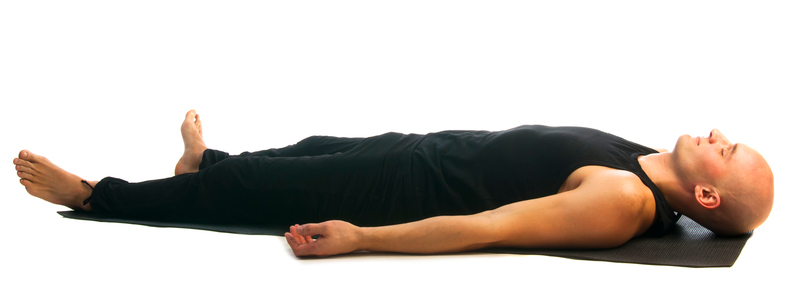
Different types can help you change your brain in different ways. Many people believe that all meditation is the same. However, this is not always true. You can use different meditation forms to reach different goals, or choose the one that suits you best. You might be amazed at the diversity of these meditation styles! Here are some ideas to get you started with meditation. Continue reading to discover more about the many benefits of meditation.
Mantra meditation, a form of seated meditation, is popular in the Hindu tradition. This type of meditation requires you to repeat a certain syllable or word in order to focus your attention. It is possible to focus your attention on the sound only when you meditate with mantras. Some traditions give the mantra a specific syllable, while others highlight the meaning. Some of these practices are popular among yoga practitioners, while others are more suited to a busy lifestyle.

Open monitoring meditation is a type of meditation that doesn't place any particular object or feeling in focus. Instead, you observe all of your senses, thoughts, and perceptions without judging them. While you are practicing open monitoring, you will develop the qualities of mindfulness and concentration in parallel. It is important you practice many different types of meditation before you find one that suits your needs. Find a form that you love and meditate.
Vipassana (loving-kindness) meditation: This is perhaps the most famous form. This type of mindfulness is about impartially watching yourself. People who deal with stressful situations or interpersonal conflicts often use this type of meditation. This form of meditation helps people increase their positive emotions and improve their overall well-being. It's a good choice for anyone who is looking for a method to cope with difficult situations in their day.
Each individual has different benefits. It is important to experiment with various types of meditation in order to discover what works for you. Different meditation styles are more appropriate for you than others. Find the one that is right for you. There is no wrong or right way to meditate. There are many options. The key to long-term happiness is choosing the right meditation. This article will help to choose the right meditation type for you.

There are many forms of meditation. The most common type of meditation is guided meditation. In this type, a guide focuses on different parts of the body. This type of meditation seeks to make the person more aware of their feelings, thoughts, and sensations. This type meditation is best for beginners. YouTube videos can help you learn how to do it. You can also access guided meditations online. It's easy for you to find a guide.
FAQ
What are 10 healthy lifestyle habits?
-
Every day, eat breakfast.
-
Don't skip meals.
-
Keep a balanced diet.
-
Drink lots of water.
-
Take care to your body.
-
Get enough sleep.
-
Avoid junk foods.
-
Daily exercise
-
Have fun!
-
Meet new people.
What is the best way to eat?
The best diet for you depends on several factors, like your age, gender, weight, health conditions, and lifestyle habits. You also need to consider how much energy you expend during exercise, whether you prefer low-calorie foods, and if you enjoy eating fruits and vegetables.
Intermittent fasting may be a good choice if you want to lose weight. Intermittent eating means that you only eat specific meals throughout the day. This is in contrast to three large meals. This may be a better option than traditional diets with daily calorie counts.
Studies have shown that intermittent fasting can improve insulin sensitivity and decrease inflammation. This could lead to improved blood sugar levels, and a lower risk of developing diabetes. Other research suggests that intermittent fasting may promote fat loss and improve overall body composition.
What is the difference of a virus from a bacteria?
A virus is a microscopic organism that cannot reproduce outside its host cell. A bacterium can be described as a single-celled organism which reproduces by splitting in two. Viruses are very small (about 20 nanometers) while bacteria are larger (up to 1 micron).
Viruses are spread via contact with infected bodily liquids such as urine, saliva, semen and vaginal secretions. Bacteria can easily be spread from direct contact to contaminated surfaces and objects.
Viral infections can also be introduced to our bodies by a variety of cuts, scrapes or bites. They can also enter the body through the mouth, nose, eyes and ears, vaginal, rectum or anus.
Bacteria can get into our bodies through cuts, scrapes and burns, insect bites, or other skin breaks. They may also be introduced into our bodies through food and water as well as soil, dirt, dust, and animals.
Both bacteria and viruses can cause illness. However, viruses cannot reproduce within their hosts. Viral infections can only cause diseases in living cells.
Bacteria can spread within the host and cause illness. They can even invade other parts of the body. That's why we need antibiotics to kill them.
Which lifestyle is best for your health?
The healthiest lifestyle to live is one where you eat healthy food, exercise regularly, sleep well, and avoid stress. This will ensure that you live a long healthy life.
It's easy to start small with your exercise and diet. If you're looking to lose weight, walk for 30 minutes each morning. If you're looking for a way to increase your activity, consider taking up swimming or dancing. A Fitbit or Strava online program that tracks your activity can be joined.
What should my weight be for my age and height? BMI calculator & chart
Calculating your body mass index (BMI), is the best method to calculate how much weight to lose. Healthy BMI ranges between 18.5 to 24.9. Weight loss is possible if you aim to lose approximately 10 pounds per week. Simply enter your height, weight and desired BMI into the BMI calculator to calculate it.
Check out this BMI chart to determine if you are overweight or obese.
Statistics
- This article received 11 testimonials and 86% of readers who voted found it helpful, earning it our reader-approved status. (wikihow.com)
- According to the Physical Activity Guidelines for Americans, we should strive for at least 150 minutes of moderate intensity activity each week (54Trusted Source Smoking, harmful use of drugs, and alcohol abuse can all seriously negatively affect your health. (healthline.com)
- WHO recommends consuming less than 5% of total energy intake for additional health benefits. (who.int)
- The Dietary Guidelines for Americans recommend keeping added sugar intake below 10% of your daily calorie intake, while the World Health Organization recommends slashing added sugars to 5% or less of your daily calories for optimal health (59Trusted (healthline.com)
External Links
How To
What does the "vitamins” word mean?
Vitamins are organic compounds naturally found in food. Vitamins aid us in absorbing nutrients from the food we eat. Vitamins cannot be produced by the body. They must be acquired from food.
There are two types of vitamins: water soluble and fat soluble. Water-soluble vitamins dissolve readily in water. Some examples include vitamin C,B1 and B2 vitamins (thiamine), B2 and riboflavin, B3 and B6 vitamins (niacin), folic acids, biotin, pantothenic acids, and cholesterol. Fat soluble vitamins are stored in the liver and fatty tissue. Some examples include vitamin D and E, K, A and beta carotene.
Vitamins are classified according their biological activity. There are eight main groups of vitamins.
-
A - essential for normal growth and maintenance of health.
-
C - important for proper nerve function and energy production.
-
D - Essential for healthy teeth and bones.
-
E is necessary for good vision, reproduction.
-
K - Essential for healthy muscles and nerves.
-
P – vital for building strong bones.
-
Q - aids digestion, absorption and absorption iron
-
R - necessary for making red blood cells.
The recommended daily allowance for vitamins (RDA) varies based on gender, age, and physical conditions. RDA values are set by the U.S. Food and Drug Administration (FDA).
For adults over 19, the RDA for vitaminA is 400 micrograms per daily. However, pregnant women need 600 micrograms per day because it is important for fetal development. Children ages 1-8 require 900 micrograms per day. Children under 1 year old require 700 micrograms daily, while infants over one year old need 500 micrograms every day. This decreases between 9 and 12 months.
Children between the ages 1--18 years old who are overweight or obese require 800 micrograms per Day, while those who are overweight or obese need 1000 micrograms. To meet their nutritional needs, children underweight and obese require 1200 micrograms a day.
Children between 4 and 8 years old with anemia will need 2200 micrograms daily of vitamin C.
2000 micrograms is the minimum daily intake for adults over 50 years old to maintain good health. Due to their increased nutrient needs, pregnant and breastfeeding women need 3000 micrograms daily.
Adults over 70 require 1500 micrograms each day, since they lose around 10% of their muscle mass every decade.
Women who have been pregnant or are lactating require more than the RDA. Pregnant mothers need 4000 micrograms per daily during pregnancy and 2500 after giving birth. Breastfeeding mothers need to consume 5000 micrograms every day when breastmilk has been produced.